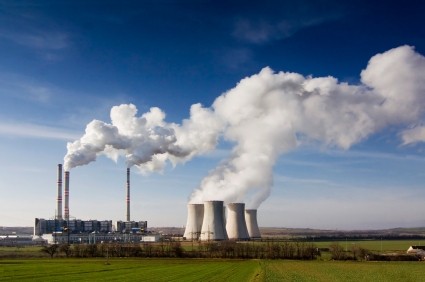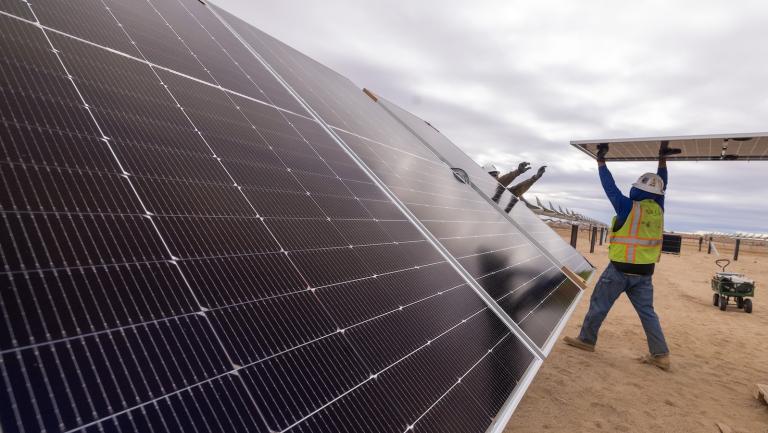Passage of the Waxman-Markey bill through the House was a shock to the Beltway. Rahm Emanuel himself called its architects after the floor vote to express his surprise and admiration — and if anyone knows how to count votes, it’s Rahm Emanuel.
One compromise more than any other enabled the bill to navigate the sticky regional politics of the Energy & Commerce Committee, and then the floor. It was the same compromise that brought utilities together with environmentalists behind the USCAP coalition, which ultimately provided the blueprint for ACES. It built a bridge between coal-state Dems and industry, who wanted pollution allowances given away to coal utilities, and between economists and environmentalists, who wanted allowances auctioned and the revenue returned directly to taxpayers.
The compromise: between now and 2025, the power industry will receive around 40 percent of the allowances for free. However, the allowances will be given to local distribution companies (LDCs), not directly to generators, with the stipulation that state utility regulators see to it that the allowance value makes its way to households. [UPDATE: A reader points out that this isn’t strictly true: 5% of the utility allowances go directly to merchant coal generators, no strings attached, which will likely represent billions of dollars of extra costs for consumers (PDF). Blech.] The idea is to protect consumers while accounting for regional differences in energy prices and carbon intensity (oh, and shield utilities from the political backlash of rate hikes).
Now. Lots of people loathe this compromise, for legitimate reasons. They don’t trust utilities. They don’t trust PUCs (utility regulators). They think regional disparities pale before differences among income levels, and could be addressed better with some sort of rebate formula. They think utilities will hold down the price of electricity, thereby muting the price signal and disproportionately raising prices of other forms of carbon (gas, heating oil, etc.). The provision in ACES that’s meant to insure that utilities don’t simply hold down electricity prices — that they return money to consumers as some form of lump-sum rebate disconnected from individual electricity use — is fatally fuzzy:
An electricity LDC shall not use the value of the emission allowances distributed under this subsection to provide to any ratepayer a rebate that is based solely on the quantity of electricity delivered to such ratepayer. [emphasis added]
For the definitive case against LDC allocation, see this brief from the Center on Budget and Policy Priorities.
Nonetheless! The LDC compromise remains at the heart of the bill. Senate EPW members and staffers are working to pin down the language. It won’t be scrapped, wholesale, for any alternative (like Cantwell’s) unless the whole bill dies. If that happens, it will be a long time before Congress tackles the issue again, so there’ll be plenty of time to noodle over other options.
So putting the merits of the LDC strategy aside, the question is, how can it still be tweaked to work better?
There are two bad outcomes possible from LDC allocation. The first is that utilities find a way to hoard the value as windfall profits, while ratepayers suffer higher prices anyway. The second is that utilities use the money to lower electricity rates, muting the carbon price signal and removing any incentive for efficiency.
There are two ways to avoid these outcomes. One is, the utilities could pass the money to consumers as lump-sum payments, separate from their electricity bills. That way, electricity prices would still rise, preserving the price signal, but consumers’ overall budget wouldn’t be hurt.
Secondly, utilities could use the allowance value to invest in energy efficiency programs. Utility energy efficiency programs not only displace dirtier generation options with the cheapest electricity available — about 2.5 cents a kilowatt — they also serve as economic stimulus, increasing economic growth rates by freeing up energy spending for other more productive uses. They’re the most effective large-scale emission reduction tools in the current toolbox.
How to make sure utilities do one of those two things?
The first tweak might simply be to tighten the language — eliminate the “solely” in that excerpted sentence above. Make sure that a) the value is put toward consumer benefit, and b) any rebates are flat lump sum, not connected to electricity use.
Another tweak is to make it clear in the bill’s language, lest there be any ambiguity, that efficiency programs do indeed qualify as “returning value to ratepayers,” since they serve to keep bills (if not rates) down.
A third tweak would be to mandate that utilities use a certain percentage of the allowance value to fund efficiency programs — 50 percent would be nice, but whatever politics can muster. This would unfavorably change the CBO budget scoring of the bill, for reasons we’ll save for a future post, but it’s worth it.
EPW staffers are working on some of these tweaks. Hopefully some of them can survive the sausage making.
Incidentally: this would be a pragmatic and fruitful focus for progressive attention right now, particularly insofar as progressives can mobilize calls and letters to Senators from Southern and Midwestern states. The ponies are off the table, at least for now. It’s time to lay hands and tools on the machine being built.



